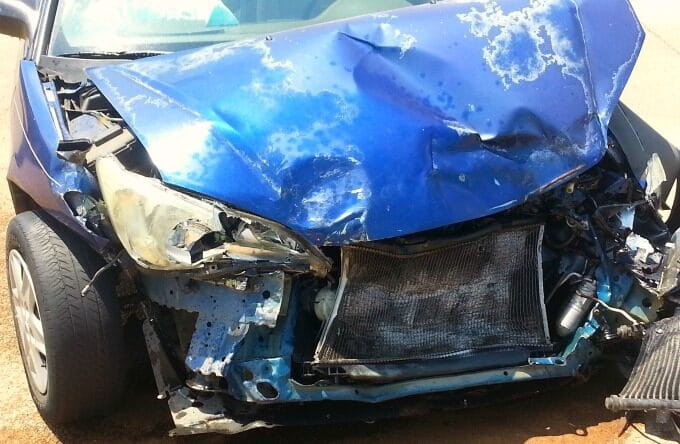A 7 Step Guide of What to Do (and Not to Do) After an Accident

A car accident is never ideal, but it is especially unnerving for a new driver.
Last month, my 17-year-old cut off a driver and got sideswiped. She called us immediately and had no idea what to do. That’s when it occurred to me, we never told her what to do after an accident.
This 7-step guide from the Insurance Information Institute can help make the moments after an accident less stressful — and the claims process a lot smoother.

Move your car to a safe area, if you can. Photo: Pixabay
1. Move to a safe area (if you can)
If it’s safe to do so and you aren’t seriously injured, move your car out of further harm’s way, like to the shoulder of the road. When moving your car just isn’t possible, flip on your hazards to warn other drivers. If you are in a place where you don’t feel safe and the car is driveable, drive to a well-lit safe area, or directly to the nearest police station. This is especially true if you were bumped from behind and think you might be the intended victim of a carjacking, the Insurance Institute says.
2. Stop your car and get out
Make sure your car is no longer moving, turn off the engine, shift into park, or set the hand brake if you drive a manual. Check to make sure it’s safe to get out of your car before opening the door. If you have flares or similar road safety items, put them out. Again, only leave the vehicle if you feel safe doing that. If not, stay in the car and call the police.
Related: Why Correct Driving Position Matters: Driving Safety Lessons From Fiat and Skip Barber Racing School

Move your car to a safe area, if you can. Photo: Pixabay
3. Check on others involved
Check on all the other parties involved, including drivers, passengers, and pedestrians, to make sure no one is hurt. Call 911 if anyone may be injured. If the airbags were deployed, definitely call.
4. Call the police to the scene
Even in minor accidents, a police accident report can prove invaluable when dealing with your car insurance company and other drivers. Cooperate fully, but avoid admitting fault or blaming others while at the scene. Let the police objectively judge events and determine who, if anyone, is at fault in the crash.
If the police can’t make it to the scene (which is likely if there are no injuries), you can file an accident report through your state’s Department of Motor Vehicles.
Don’t be tempted to forego a police report just because the guilty party doesn’t want the accident on his or record. One new driver, after being hit by a kindly farmer in a minor fender bender, agreed to his request that they do not call the police. The young driver then spent two weeks wrangling with the guilty driver who balked at paying the price the body shop said it would charge to fix her car. If there had been a police report and the accident was reported to the insurance companies, she could have sat back and let the companies fight over the settlement.
Do You Have a Teen Driver? Check Out the 10 Things We Learned When Our Teens Started Driving.

Get as much information as possible. Photo: Pixabay
5. Gather info
Try to write down as much info as possible in the accident aftermath, including:
- Driver and passenger names
- License plate numbers
- Car registration
- Insurance info
- Makes and models of all vehicles involved
- Contact info for any eyewitnesses
- Location of the accident
- Time of day
- Weather conditions
- The name and badge number of any responding police officers
Smartphones are a great way to record driver and car documentation. Just snap photos of everything.
6. Document the scene
Also, use your phone to snap photos of the accident scene. They’ll come in handy during the claim process. Make sure to not only take photos of your car but the other car as well. If you have a car camera installed, be sure to save the footage.
Related: Safety, Good Driving, Speed: What My Mom Taught Me About Cars
7. Call Your Insurance Company
These are just basic tips in the event of an accident, as each accident will be different. Once you get home, be sure to call your insurance company and file your claim.

